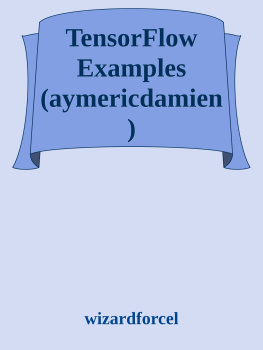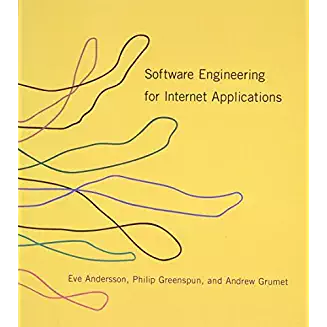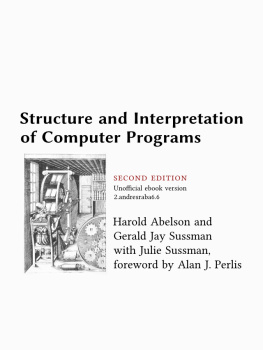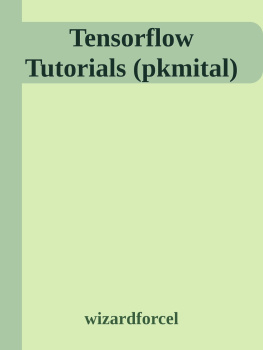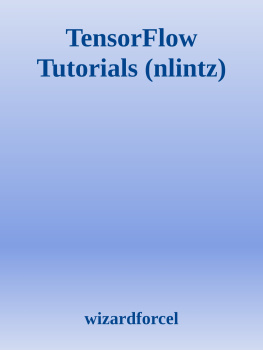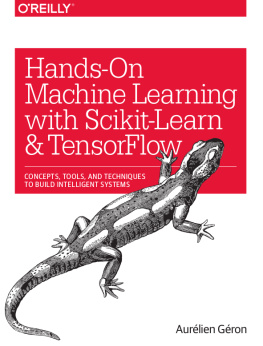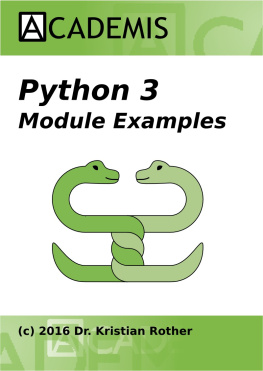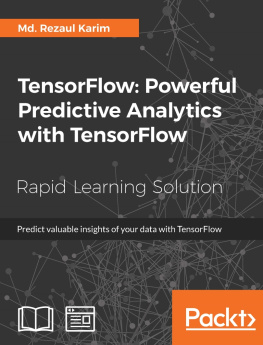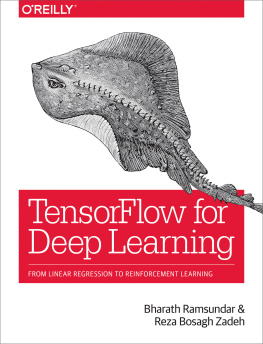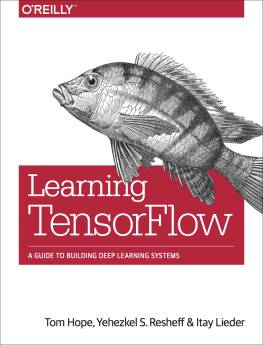it-ebooks - TensorFlow Examples (aymericdamien)
Here you can read online it-ebooks - TensorFlow Examples (aymericdamien) full text of the book (entire story) in english for free. Download pdf and epub, get meaning, cover and reviews about this ebook. year: 2018, publisher: iBooker it-ebooks, genre: Romance novel. Description of the work, (preface) as well as reviews are available. Best literature library LitArk.com created for fans of good reading and offers a wide selection of genres:
Romance novel
Science fiction
Adventure
Detective
Science
History
Home and family
Prose
Art
Politics
Computer
Non-fiction
Religion
Business
Children
Humor
Choose a favorite category and find really read worthwhile books. Enjoy immersion in the world of imagination, feel the emotions of the characters or learn something new for yourself, make an fascinating discovery.
- Book:TensorFlow Examples (aymericdamien)
- Author:
- Publisher:iBooker it-ebooks
- Genre:
- Year:2018
- Rating:4 / 5
- Favourites:Add to favourites
- Your mark:
- 80
- 1
- 2
- 3
- 4
- 5
TensorFlow Examples (aymericdamien): summary, description and annotation
We offer to read an annotation, description, summary or preface (depends on what the author of the book "TensorFlow Examples (aymericdamien)" wrote himself). If you haven't found the necessary information about the book — write in the comments, we will try to find it.
TensorFlow Examples (aymericdamien) — read online for free the complete book (whole text) full work
Below is the text of the book, divided by pages. System saving the place of the last page read, allows you to conveniently read the book "TensorFlow Examples (aymericdamien)" online for free, without having to search again every time where you left off. Put a bookmark, and you can go to the page where you finished reading at any time.
Font size:
Interval:
Bookmark:
Prior to start browsing the examples, it may be useful that you get familiar with machine learning, as TensorFlow is mostly used for machine learning tasks (especially Neural Networks). You can find below a list of useful links, that can give you the basic knowledge required for this TensorFlow Tutorial.
- An Introduction to Machine Learning Theory and Its Applications: A Visual Tutorial with Examples
- A Gentle Guide to Machine Learning
- A Visual Introduction to Machine Learning
- Introduction to Machine Learning
- An Introduction to Neural Networks
- An Introduction to Image Recognition with Deep Learning
- Neural Networks and Deep Learning
Most examples are using MNIST dataset of handwritten digits. The dataset contains 60,000 examples for training and 10,000 examples for testing. The digits have been size-normalized and centered in a fixed-size image (28x28 pixels) with values from 0 to 1. For simplicity, each image has been flatten and converted to a 1-D numpy array of 784 features (28*28).
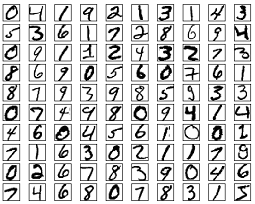
In our examples, we are using TensorFlow input_data.py script to load that dataset.It is quite useful for managing our data, and handle:
Dataset downloading
Loading the entire dataset into numpy array:
# Import MNIST from tensorflow.examples.tutorials.mnist import input_datamnist = input_data.read_data_sets( "/tmp/data/" , one_hot= True ) # Load data X_train = mnist.train.imagesY_train = mnist.train.labelsX_test = mnist.test.imagesY_test = mnist.test.labels- A
next_batchfunction that can iterate over the whole dataset and return only the desired fraction of the dataset samples (in order to save memory and avoid to load the entire dataset).
# Get the next 64 images array and labels batch_X, batch_Y = mnist.train.next_batch()Link: http://yann.lecun.com/exdb/mnist/
import tensorflow as tf# Simple hello world using TensorFlow # Create a Constant op # The op is added as a node to the default graph. # # The value returned by the constructor represents the output # of the Constant op. hello = tf.constant( 'Hello, TensorFlow!' )# Start tf session sess = tf.Session()# Run graph print sess.run(hello)Hello, TensorFlow!# Basic Operations example using TensorFlow library. # Author: Aymeric Damien # Project: https://github.com/aymericdamien/TensorFlow-Examples/import tensorflow as tf# Basic constant operations # The value returned by the constructor represents the output # of the Constant op. a = tf.constant()b = tf.constant()# Launch the default graph. with tf.Session() as sess: print "a: %i" % sess.run(a), "b: %i" % sess.run(b) print "Addition with constants: %i" % sess.run(a+b) print "Multiplication with constants: %i" % sess.run(a*b)a=2, b=3Addition with constants: 5Multiplication with constants: 6# Basic Operations with variable as graph input # The value returned by the constructor represents the output # of the Variable op. (define as input when running session) # tf Graph input a = tf.placeholder(tf.int16)b = tf.placeholder(tf.int16)# Define some operations add = tf.add(a, b)mul = tf.multiply(a, b)# Launch the default graph. with tf.Session() as sess: # Run every operation with variable input print "Addition with variables: %i" % sess.run(add, feed_dict={a: , b: }) print "Multiplication with variables: %i" % sess.run(mul, feed_dict={a: , b: })Addition with variables: 5Multiplication with variables: 6# ---------------- # More in details: # Matrix Multiplication from TensorFlow official tutorial # Create a Constant op that produces a 1x2 matrix. The op is # added as a node to the default graph. # # The value returned by the constructor represents the output # of the Constant op. matrix1 = tf.constant([[, ]])# Create another Constant that produces a 2x1 matrix. matrix2 = tf.constant([[],[]])# Create a Matmul op that takes 'matrix1' and 'matrix2' as inputs. # The returned value, 'product', represents the result of the matrix # multiplication. product = tf.matmul(matrix1, matrix2)# To run the matmul op we call the session 'run()' method, passing 'product' # which represents the output of the matmul op. This indicates to the call # that we want to get the output of the matmul op back. # # All inputs needed by the op are run automatically by the session. They # typically are run in parallel. # # The call 'run(product)' thus causes the execution of threes ops in the # graph: the two constants and matmul. # # The output of the op is returned in 'result' as a numpy `ndarray` object. with tf.Session() as sess: result = sess.run(product) print result[[ 12.]]A simple introduction to get started with TensorFlow's Eager API.
- Author: Aymeric Damien
- Project: https://github.com/aymericdamien/TensorFlow-Examples/
Eager execution is an imperative, define-by-run interface where operations areexecuted immediately as they are called from Python. This makes it easier toget started with TensorFlow, and can make research and development moreintuitive. A vast majority of the TensorFlow API remains the same whether eagerexecution is enabled or not. As a result, the exact same code that constructsTensorFlow graphs (e.g. using the layers API) can be executed imperativelyby using eager execution. Conversely, most models written with Eager enabledcan be converted to a graph that can be further optimized and/or extractedfor deployment in production without changing code. - Rajat Monga
More info: https://research.googleblog.com/2017/10/eager-execution-imperative-define-by.html
from __future__ import absolute_import, division, print_function import numpy as np import tensorflow as tf import tensorflow.contrib.eager as tfe# Set Eager API print( "Setting Eager mode..." )tfe.enable_eager_execution()Setting Eager mode...# Define constant tensors print( "Define constant tensors" )a = tf.constant()print( "a = %i" % a)b = tf.constant()print( "b = %i" % b)Define constant tensorsa = 2b = 3# Run the operation without the need for tf.Session print( "Running operations, without tf.Session" )c = a + bprint( "a + b = %i" % c)d = a * bprint( "a * b = %i" % d)Running operations, without tf.Sessiona + b = 5a * b = 6# Full compatibility with Numpy print( "Mixing operations with Tensors and Numpy Arrays" ) # Define constant tensors a = tf.constant([[, ], [, ]], dtype=tf.float32)print( "Tensor:\n a = %s" % a)b = np.array([[, ], [, ]], dtype=np.float32)print( "NumpyArray:\n b = %s" % b)Mixing operations with Tensors and Numpy ArraysTensor: a = tf.Tensor([[2. 1.] [1. 0.]], shape=(2, 2), dtype=float32)NumpyArray: b = [[3. 0.] [5. 1.]]Font size:
Interval:
Bookmark:
Similar books «TensorFlow Examples (aymericdamien)»
Look at similar books to TensorFlow Examples (aymericdamien). We have selected literature similar in name and meaning in the hope of providing readers with more options to find new, interesting, not yet read works.
Discussion, reviews of the book TensorFlow Examples (aymericdamien) and just readers' own opinions. Leave your comments, write what you think about the work, its meaning or the main characters. Specify what exactly you liked and what you didn't like, and why you think so.

